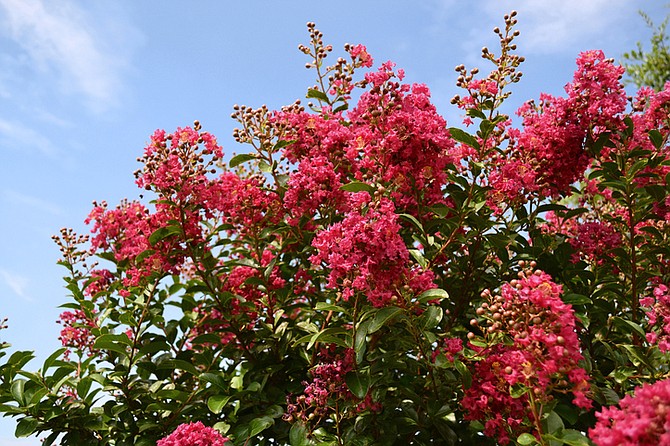 Facebook
Facebook
 X
X
 Instagram
Instagram
 TikTok
TikTok
 Youtube
Youtube

According to precipitation data compiled since the year 1850, only four hundredths of an inch of rain falls on average during the month of July, compared to almost two inches in January, the wettest month. July also marks the beginning of a new rainfall year, as defined by local meteorological convention. Birdwatchers need not despair now that the winter migrants are gone. Plenty of shore birds can be found on summer evenings in the natural coastal wetland areas of San Diego County. From south to north the publicly accessible coastal wetlands include the Tijuana River Estuary, south San Diego Bay (just north of Imperial Beach and along the bay shore at Chula Vista), the San Diego River channel (inland from SeaWorld), Los Penasquitos lagoon (adjacent to Torrey Pines State Reserve), the San Dieguito River estuary, San Elijo Lagoon, Batiquitos Lagoon, Agua Hedionda Lagoon, and Buena Vista Lagoon. In and around these areas look for California gulls, American avocets, brown pelicans, snowy egrets, killdeer, and redwing blackbirds.
Agaves (a.k.a. century plants) are coming into bloom in many summer gardens this month. After a decade or more (not a century) of growth, the larger kinds of agave send up a tall, yellow-blossomed flower stalk from a base of fleshy, succulent, thorn-tipped leaves. The stalk and basal leaves die, but suckers make new plants and begin the cycle anew.
Crape Myrtles are in bloom around San Diego this month through the end of summer. This smallish, vase-shaped tree blossoms in colors ranging from white or pale pink to lavender, red, and blue. “Lilac of the South" is one of the nicknames given to this native tree of China because of its popularity in the warmer parts of the U.S.
Native Lilies, such as the Humboldt lily, are blooming this month in widely scattered locations throughout San Diego County's higher mountains. To find them take a walk on the Noble Canyon Trail in the Laguna Mountains, or explore the pine woodlands of Palomar Mountain and Cuyamaca Rancho state parks. The large, nodding flowers of the lilies, orange or yellow with brown spots, grow in clusters on stems two to eight feet tall.
Cicadas, the insects that sound like tiny buzzsaws in the brush, have been putting up a racket around San Diego lately. Occasionally mistaken for the tail buzz of a rattlesnake, the sound is merely that of a male calling to potential mates. Some 30 species of cicadas inhabit San Diego County, but none are of the famous periodical type that emerge en masse every 13 or 17 years to serenade parts of the eastern United States.


According to precipitation data compiled since the year 1850, only four hundredths of an inch of rain falls on average during the month of July, compared to almost two inches in January, the wettest month. July also marks the beginning of a new rainfall year, as defined by local meteorological convention. Birdwatchers need not despair now that the winter migrants are gone. Plenty of shore birds can be found on summer evenings in the natural coastal wetland areas of San Diego County. From south to north the publicly accessible coastal wetlands include the Tijuana River Estuary, south San Diego Bay (just north of Imperial Beach and along the bay shore at Chula Vista), the San Diego River channel (inland from SeaWorld), Los Penasquitos lagoon (adjacent to Torrey Pines State Reserve), the San Dieguito River estuary, San Elijo Lagoon, Batiquitos Lagoon, Agua Hedionda Lagoon, and Buena Vista Lagoon. In and around these areas look for California gulls, American avocets, brown pelicans, snowy egrets, killdeer, and redwing blackbirds.
Agaves (a.k.a. century plants) are coming into bloom in many summer gardens this month. After a decade or more (not a century) of growth, the larger kinds of agave send up a tall, yellow-blossomed flower stalk from a base of fleshy, succulent, thorn-tipped leaves. The stalk and basal leaves die, but suckers make new plants and begin the cycle anew.
Crape Myrtles are in bloom around San Diego this month through the end of summer. This smallish, vase-shaped tree blossoms in colors ranging from white or pale pink to lavender, red, and blue. “Lilac of the South" is one of the nicknames given to this native tree of China because of its popularity in the warmer parts of the U.S.
Native Lilies, such as the Humboldt lily, are blooming this month in widely scattered locations throughout San Diego County's higher mountains. To find them take a walk on the Noble Canyon Trail in the Laguna Mountains, or explore the pine woodlands of Palomar Mountain and Cuyamaca Rancho state parks. The large, nodding flowers of the lilies, orange or yellow with brown spots, grow in clusters on stems two to eight feet tall.
Cicadas, the insects that sound like tiny buzzsaws in the brush, have been putting up a racket around San Diego lately. Occasionally mistaken for the tail buzz of a rattlesnake, the sound is merely that of a male calling to potential mates. Some 30 species of cicadas inhabit San Diego County, but none are of the famous periodical type that emerge en masse every 13 or 17 years to serenade parts of the eastern United States.
Comments